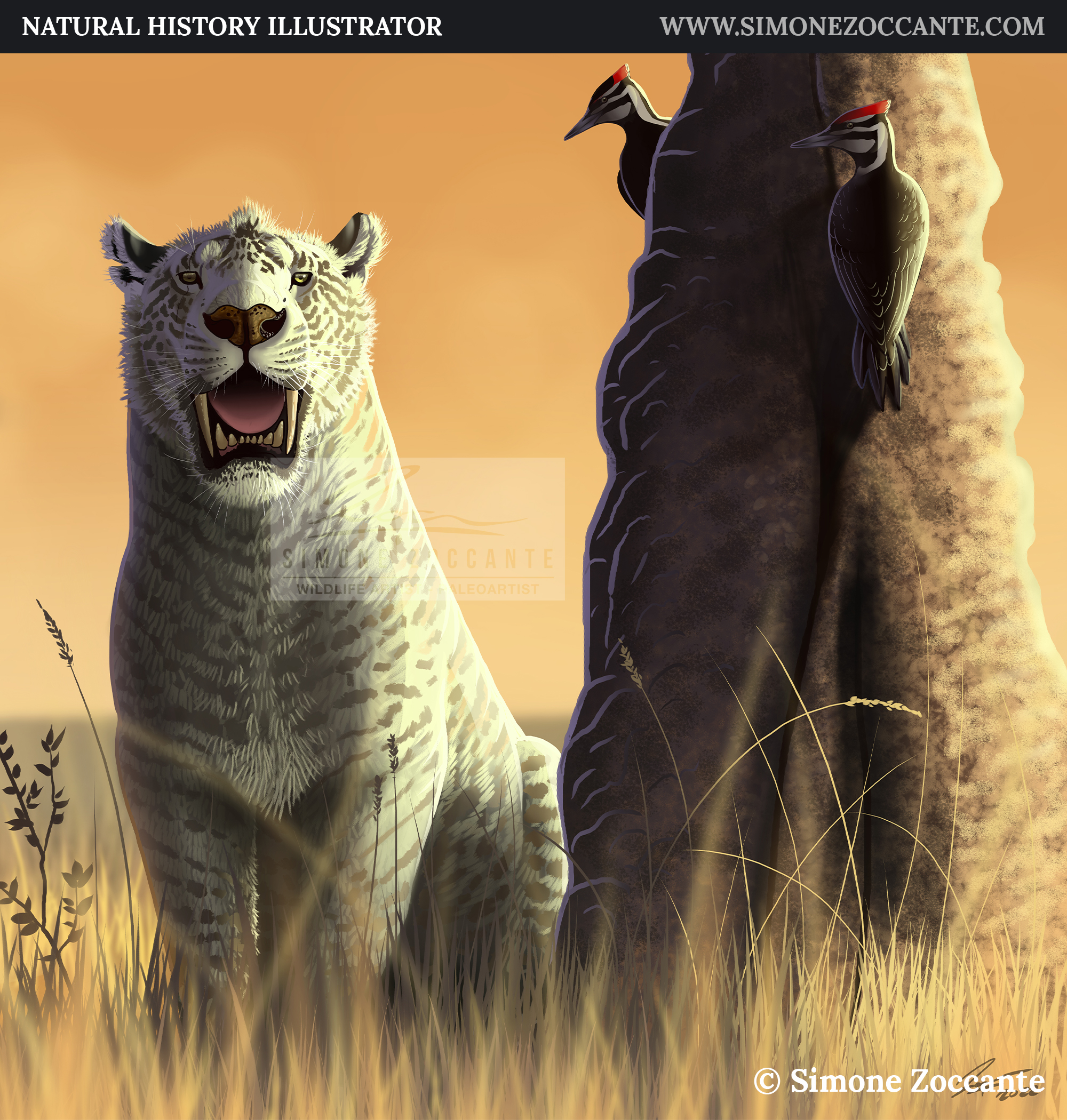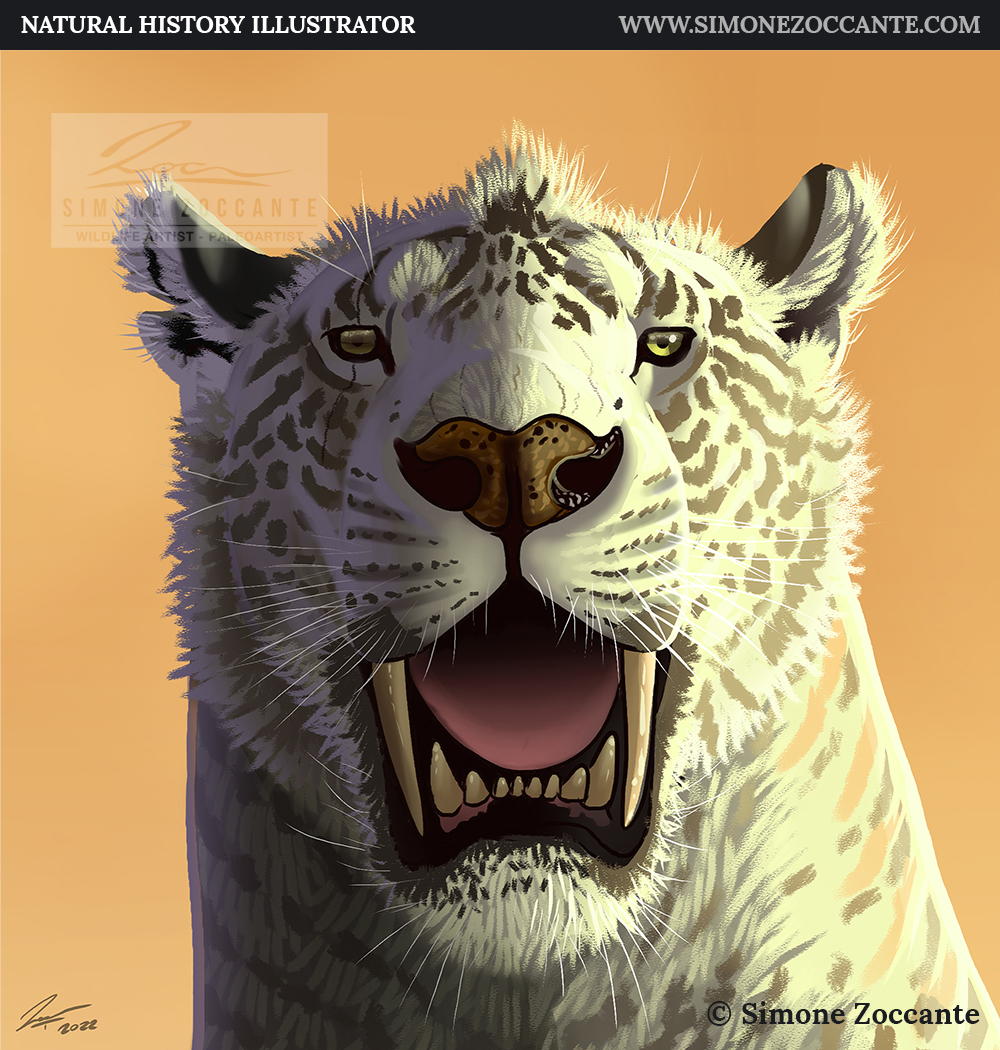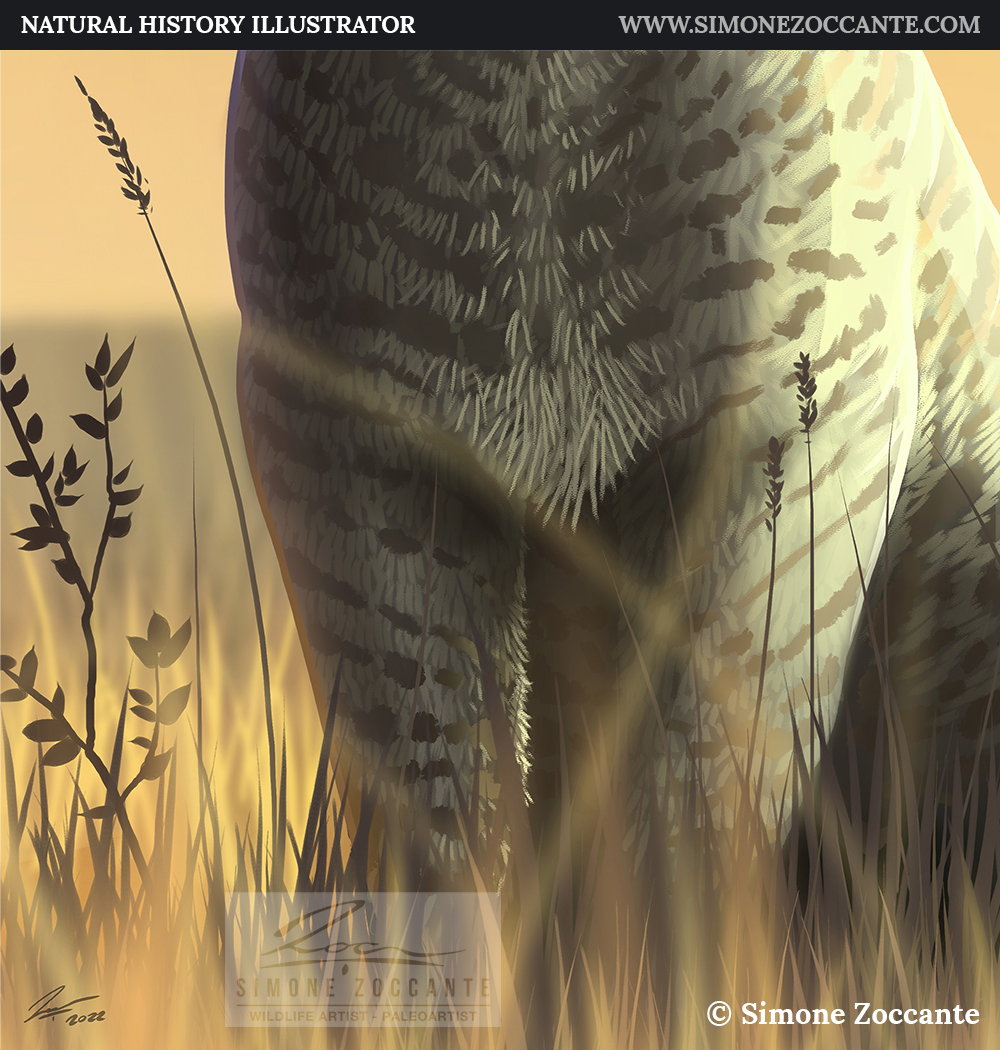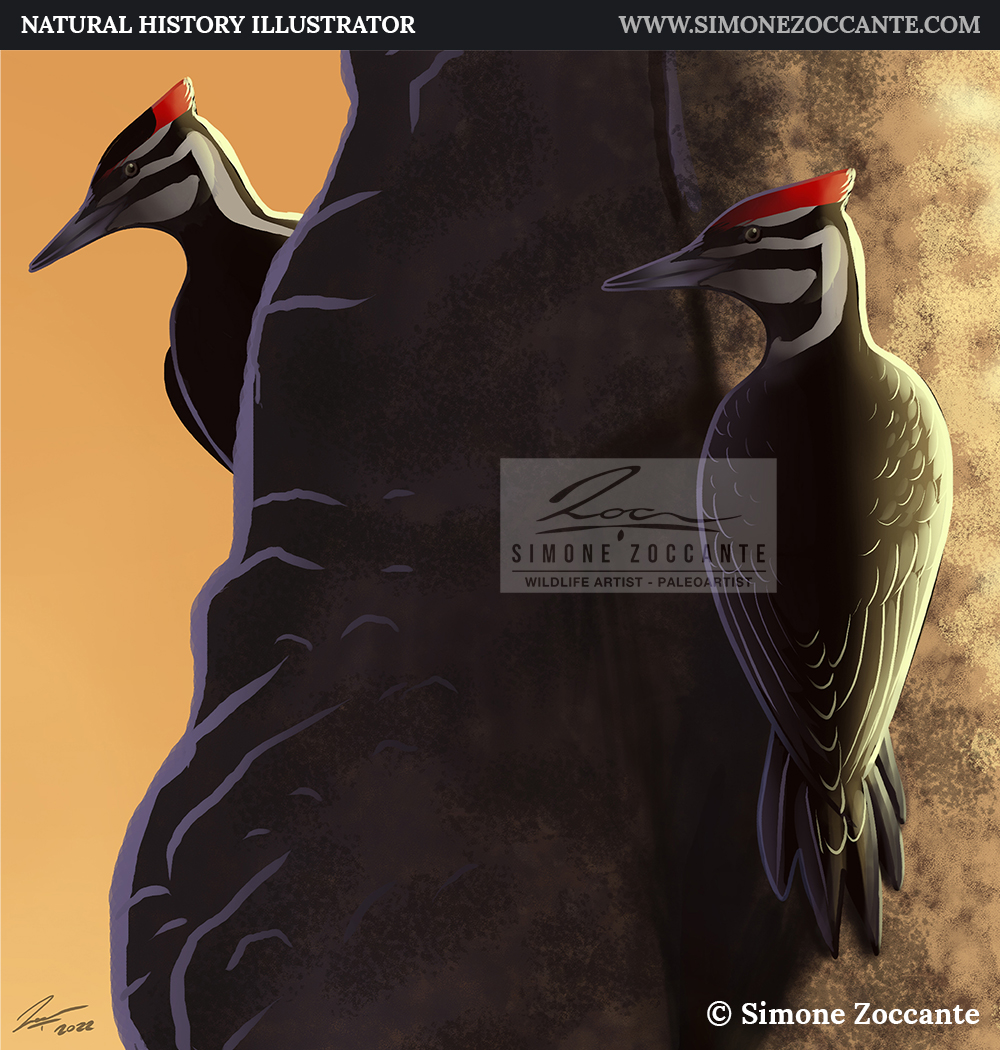
LEUCISTIC SMILODON
Leucistic Smilodon
California, Late Pleistocene. It’s a hot late summer day, and the sun is scorching the sky with its last rays.
Next to a termite mound, a large male Smilodon fatalis is scanning his territory. It has been a very hot day, and the big feline spent most of the day sleeping in a grove of oak trees not far away, along with its group.
With the evening, it has come out into the open to go hunting, taking position next to a gigantic termite mound, where two female Pileated Woodpeckers have landed for a snack.
However, this specimen is not like any other Smilodon. It is, in fact, a leucistic individual.
Leucism is a genetic mutation caused by a recessive gene that results in a change in pigmentation. It is a form of incomplete albinism: the individual has a white coat or plumage when it should have had a different coloration.
Leucism is quite common in felids. It has been observed both in the wild and in captivity in tigers, lions, leopards, pumas, servals, lynxes, cheetahs, fishing cats, and ocelots.
Although there is no evidence of leucism occurring among the Machairodontinae, the fact that it is widespread in modern felids does not exclude the possibility of its presence in that category of extinct felids.
Year: 2022
Client: Simone Zoccante / Diorama Nature
Software: Adobe Photoshop
Dimension (for Print): 50 x 50 cm @ 300 dpi
Dimension (in Pixel): 5906 x 5906 px



If you are interested in using this image for your projects and works you can contact me and we can discuss about licensing.
All images © Simone Zoccante 2018-2023. Please do not reproduce without the expressed written consent of Simone Zoccante.
